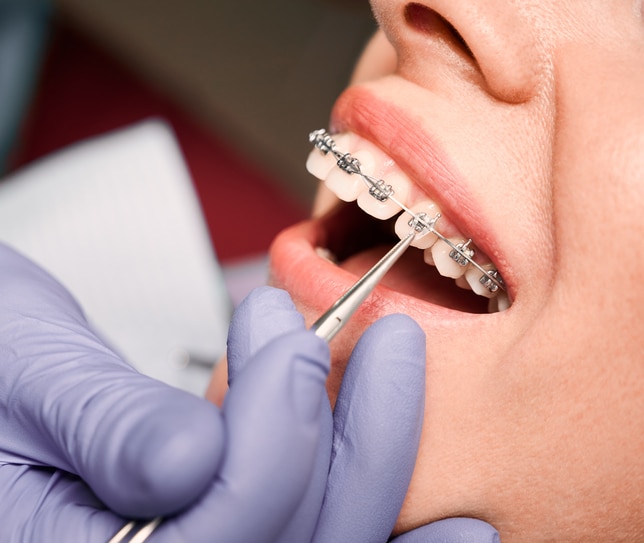Why Cumming Invisalign is the Perfect Choice for a Discreet Orthodontic Solution
Comprehensive Overview to Orthodontics Treatments for Fixing Oral Imbalances
Recognizing the complexities of each treatment, including their mechanisms, advantages, and potential disadvantages, is essential in making educated decisions regarding one's orthodontic treatment. As we navigate with the comprehensive guide to orthodontic treatments for dealing with dental misalignments, the intricate details of each technique will certainly unravel, losing light on the path towards a unified and functional oral alignment.
Orthodontic Procedures Introduction

Routine adjustments and surveillance are vital parts of orthodontic treatment to ensure progression is on track and to make any type of required modifications along the means. By going through orthodontic procedures, individuals can not only accomplish a straighter grin but additionally improve their general oral health and feature.
Traditional Braces: Just How They Work
When taking into consideration orthodontic therapies for oral imbalances, conventional dental braces stand out as a reliable approach for fixing teeth positioning. Typical dental braces consist of braces, cables, and bands that function together to apply constant pressure on the teeth, progressively moving them into the desired alignment.
One trick facet of how traditional braces work is the procedure of bone renovation. As stress is related to the teeth through the dental braces, the bone bordering the teeth is improved to support the new tooth positions. This remodeling is important for the long-lasting security of the corrected alignment. Patients will certainly require normal adjustments at the orthodontist's office to make sure the braces remain to apply the proper pressure for efficient teeth activity.
Undetectable Aligners: Disadvantages and pros
Unnoticeable aligners supply a discreet and hassle-free option to traditional dental braces for correcting oral misalignments. These clear, customized trays are basically unnoticeable when put on, making them an attractive option for people seeking an extra visually pleasing orthodontic therapy. One of the key benefits of unnoticeable aligners is their removability, enabling less complicated maintenance of dental hygiene compared to traditional dental braces. People can remove the aligners before consuming or brushing their teeth, reducing the risk of food getting embeded the appliance and simplifying the cleansing process.

Surgical Orthodontic Options
Surgical treatments in orthodontics present sensible choices for dealing with intricate oral misalignments that might not be effectively dealt with via traditional orthodontic therapies. While standard braces and unseen aligners can correct several orthodontic problems, particular cases call for hop over to these guys surgical treatment to achieve optimum results. Surgical orthodontic choices are generally advised for extreme malocclusions, significant jaw disparities, and cases where the underlying bone framework requires alteration to accomplish correct alignment.
One usual medical orthodontic treatment is orthognathic surgery, which involves repositioning the jaws to deal with practical issues such as problem speaking or eating. This surgical treatment is often carried out in partnership with an orthodontist that helps line up the teeth before and after the procedure. Surgical orthodontics might additionally involve procedures to expose affected teeth, remove excess periodontal tissue, or reshape the jawbone to create an extra harmonious facial profile.
Prior to thinking about surgical orthodontic choices, people undertake an extensive assessment to figure out the need and possible advantages of such interventions. cumming orthodontics. While surgical treatment may appear overwhelming, it can significantly boost both the feature and aesthetics of the smile in cases where conventional orthodontic treatments drop short
Retainers and Post-Treatment Treatment

Post-treatment treatment includes complying with the orthodontist's directions carefully. This might include proper dental health methods, going to follow-up visits, and content using the retainers as recommended. Failure to comply with post-treatment treatment guidelines can cause relapse, where the teeth slowly move back towards their initial placements. Constant retainer wear, great dental health, and routine oral examinations are vital for maintaining the results attained through orthodontic surgical procedure and making certain the long-term security of the dealt with oral positioning.
Conclusion
In verdict, orthodontic treatments use various choices for remedying dental imbalances. Surgical orthodontic choices are offered for a lot more serious misalignments. In general, orthodontic procedures can efficiently enhance dental health and wellness and aesthetic appearance.
As we navigate through the extensive guide to orthodontic procedures for dealing with oral imbalances, the detailed information of each approach will certainly unravel, dropping light on the course towards a unified and practical dental alignment. - cumming braces
One of the most usual orthodontic therapies is the use of braces, which are composed of steel brackets and wires that apply mild stress to slowly shift teeth into the desired position.When taking into consideration orthodontic therapies for dental misalignments, typical dental braces stand out as a tried and true method for correcting teeth positioning. Additionally, invisible aligners might not be appropriate for intricate orthodontic concerns that need more significant teeth activity, as they are commonly suggested for teeth bleaching mild to modest situations. Retainers are tailor-made orthodontic devices designed to hold teeth in their fixed positions after the conclusion of orthodontic treatment.